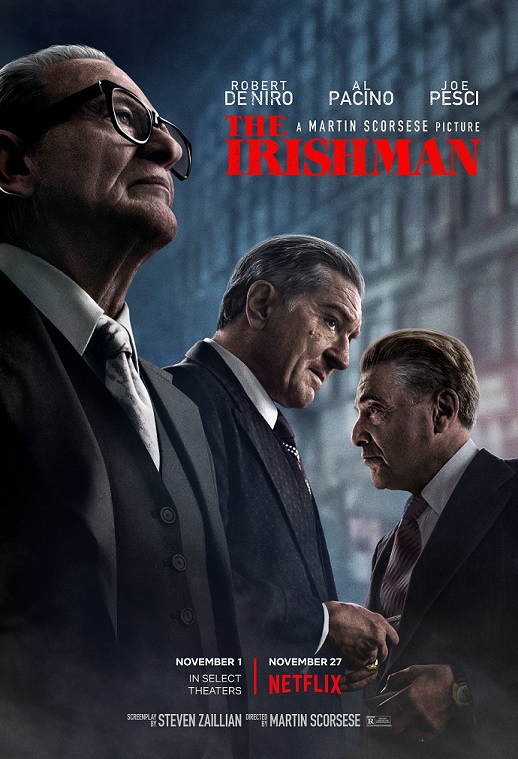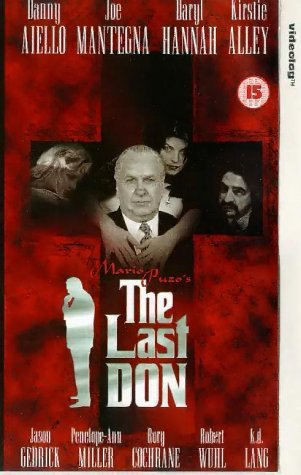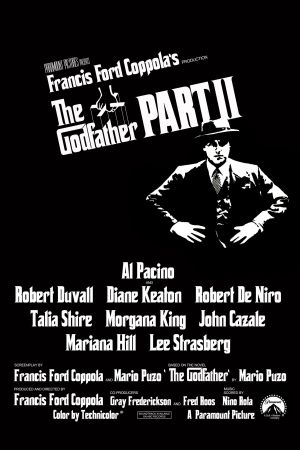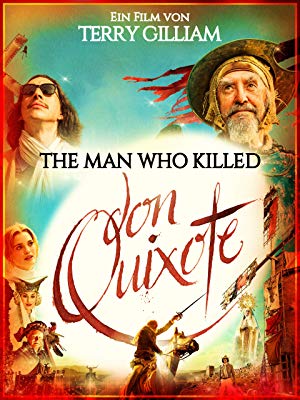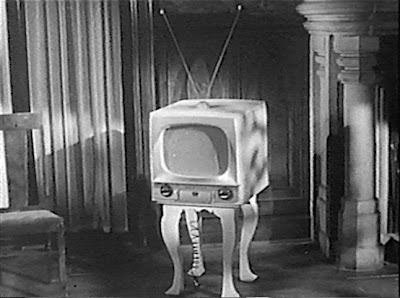
Happy 2022! I spent most of this holiday week visiting my sister Megan and her family. That’s been a bit of a Bowman holiday tradition since 2008. We watched a lot of TV. We both love Saved By The Bell and California Dreams so that shouldn’t be too much of surprise. Anyway, there’s much to share this week so let’s get right into what I watched during the final week of 2021!

The Bold and the Beautiful (Weekday afternoons, CBS)
This used to be my show! Of course, it’s been a while since I’ve regularly watched The Bold and the Beautiful but, on Wednesday, I decided to tune in just to see what was happening. People were discussing their relationships and talking about fashion while getting ready for New Year’s. Brooke is still on the show. I might start setting the DVR in 2022.
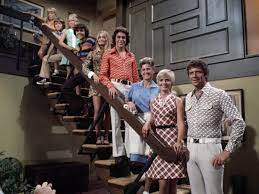
The Brady Bunch (Sunday Morning, MeTV)
I watched two episodes. First, Greg wanted to drop out of high school to pursue a career as a major league pitcher. He was talked out of it. Is there nothing that the Brady kids weren’t good at? What an annoying family! This was followed by an episode in which Marcia promised she could get Davy Jones to play her high school dance and somehow, she pulled it off because everything always worked out for Marcia. Jan, on the other hand….
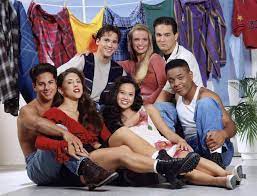
California Dreams (DVD)
Megan and I watched a few episodes of this classic 90s NBC sitcom on Friday morning. It’s kind of our New Year’s tradition. We both agreed that Lorena and I have a lot in common. We also watched Tony perform that “Next big thing” song of his. He’s so funky!

Dance Moms (Wednesday, LRW)
LRW did a Dance Moms marathon on Wednesday. I watched a few episodes that morning and it made me realize how much I miss this show. It also brought back a lot of memories for me personally, though my mom was never as crazy as the moms on this show. I wonder if Maddie ever returns Abby’s calls.
Since the show aired on LRW, I got to see all those old “real women” commercials that Lifetime used to air, like the one with the woman talking about the time she scolded her mom for saying she needed a man to explain something to her. “You know, that was her generation, ha ha ha.” All I know is that you just made fun of your mother on national television.
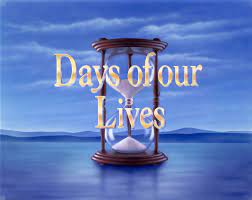
Days of Our Lives (Weekday Afternoons, NBC)
It’s been a while since I’ve watched any of the daytime dramas but my sister Megan informed me that a character on Days of Our Lives had been possessed by the devil since September so, on Tuesday, I decided to watch to see what that was like. From what I saw of it, it looked like a lot of fun. With Marlena tied to her bed and speaking in a gravelly demon voice, everyone was getting ready for the exorcism. “We’re not dealing with your mom,” one character explain, “We’re dealing with …. it.” “You shut your mouth or you’re going to get a face full of holy water!” someone else declared. A priest entered the bedroom and Marlena’s daughter said, “You’re a priest again?” Meanwhile, Patch dressed up as Santa Claus, which was charming in its own weird way. Fortunately, everything worked out in the end. These are indeed the days of our lives.
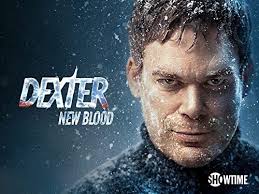
Dexter: New Blood (Showtime, Sunday Night)
I wrote about the latest episode of Dexter here!

Football Game: Bills vs. Patriots (Sunday Afternoon, CBS)
I watched this on Sunday morning with my sisters. I have to admit that I didn’t pay much attention but I do remember that everyone wanted the Bills to win so I felt obligated to cheer for the Patriots. I don’t remember who actually won, though. Football games are really, really long.

Football Game: Cowboys vs. Football Team (Sunday Night, NBC)
I watched this game with my sister Megan and her husband, John. They got really excited whenever the Cowboys scored. I felt bad for Football Team. I figure that it has to suck to be a member of Football Team because everyone they meet is probably like, “Who do you play for?” and when the player says, “Football team,” everyone probably replies, “I know, but which one?” What I’m saying here is that these guys need a real name if they’re going to succeed. For example, the Cowboys pretty much destroyed Football Team on Sunday. I thought the Cowboys were seriously going to score a 100 points before the game ended. Poor generic Football Team.

General Hospital (Weekday Afternoons, ABC)
I watched an episode on Wednesday. Too much talk, not enough hospital.

Hang Time (YouTube)
Hang Time was basically Saved By The Bell except it centered around a high school basketball team in Indiana. It aired from 1995 to 2000 on NBC and it was never that good but it lives on because every episode has been uploaded to YouTube. NBC is pretty aggressive about taking down unauthorized SBTB uploads but they don’t seem to care much about Hang Time.
Anyway, early Wednesday morning, I forced Megan to watch an episode because I wanted her to hear one line that always amused me. The episode opened, as they often did, with a basketball game. However, for this game, the main characters (including a very young Anthony Anderson) were forced to spend the entire game on the bench while the backup players hit the court and …. uhm, lost. In fact, they lost bad. It turned out the main characters were being punished for getting fake IDs and driving drunk.
About 15 minutes into the episode, one of the backup players is injured but when he limps over to the baseline or the sideline or whatever they call it in basketball, he yells at the coach that he wants to keep playing because, unlike some people, “I CARE ABOUT THE TEAM!” And then coach sends him back into the game despite the fact that the he can barely walk! For some reason, that’s always made me laugh. The coach taught his players a lesson by forcing someone who did nothing wrong to play injured. What a guy!

The Love Boat (Sunday Afternoon, MeTV)
The Love Boat and another ship traveled to Alaska, where the captains competed to see who was the best. Apparently, it was a promotional gimmick but the competition turned personal when the son of the rival captain decided that he would rather work on the super mellow Love Boat as opposed to his father’s boat. Anyway, it was silly but Alaska looked lovely. Plus, Sonny Bono was on the episode as some sort of hyper corporate guy.

The Office (Weekdays, Comedy Central)
Comedy Central did an Office marathon this week. On Monday, I watched a few episodes from season 2. They kept me happy as I wrote 2,300 words on Monster, one of the most depressing movies ever made. (Look for that review on Monday!) Then, on Tuesday, I watched a few episodes from season 3 while I was writing another 2,000 words about the making of The Godfather Part III. (Look for that post on Monday as well!)
By the time Wednesday rolled around, Comedy Central had started on season 5, which is when the show started to get uneven and, not coincidentally, Ed Helms’s role started to get larger. However, there were still some classic episodes during season 5, like the Golden Ticket episode and The Michael Scott Paper Company arc. Those also just happened to be the episodes that I watched.
By Thursday, we were into season six and …. eh. Season six is when Jim and Pam started to get a bit insufferable in their smugness and there was that whole weird thing where Jim was briefly co-manager. Megan and I watched the Gossip episode and The Meeting episode and we both agreed it was actually kind of rude of Jim to go behind Michael’s back with his whole co-manager idea. We then did a little shopping. When we came back, we caught my two favorite episodes of that season — Scott’s Tots and The Shareholder’s Meeting.
Hey there, Mr. Scott, whatcha going to do? Whatcha going to do? Make our dreams come true!

Parking Wars (Weekday Mornings, A&E)
On Thursday morning, I forced Megan to watch an episode of Parking Wars with me, just so she could understand what I’m always complaining about. For 30 minutes, as we watched the action in Detroit and Philadelphia, I said, “See? This is totally how fascism comes to be accepted!” Megan said she agreed with me, though I think she may have just been saying that …. which is fine! Just as long everyone agrees.
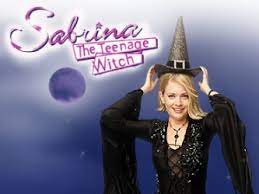
Sabrina, The Teenage Witch (Fuse, Monday Morning)
Sabrina felt that all of her academic accomplishments were being taken for granted so she cast a spell which caused everyone to go crazy over every little thing she did. Needless to say, an important lesson about humility was learned.
As far as I’m concerned, this is the only show about Sabrina, The Teenage Witch that matters. Talking Salem for the win!

Saved By The Bell: The Junior High Years (a.k.a. Good Morning Miss Bliss) (Netflix)
At December 26th, at midnight, my sister Megan and I sat down and watched six episodes of Saved By The Bell. Well, we didn’t actually just spend 2 and a half hours watching them. We were talking and cleaning and laughing and doing other things. But still, we had the show on and we did occasionally pause long enough in all of our other activities to see what was going on.
The episodes that we watched were from the infamous Junior High years. That was when the show aired on the Disney Channel and it was set in Indiana and Slater, Kelly, and Jessie were not on the show. Instead, the show centered around Miss Bliss (Hayley Mills), a British widow who somehow ended up teaching social studies at a junior high in Indiana. At the time, the show was called Good Morning, Miss Bliss. Good Morning, Miss Bliss was canceled after 13 episodes but was then relaunched on NBC, with Zack, Screech, Lisa, and Mr. Belding all somehow relocating to California. The Miss Bliss episodes could probably be written off as non-canon, if not for the fact that many of them were re-aired as episodes of Saved By The Bell, with special introductions in which Zack would say, “This is from when we were in junior high.” It didn’t make any sense but Saved By The Bell just didn’t care.
Anyway, the first episode of Good Morning, Miss Bliss featured Zack lying to a girl about the fact that he was only in the 8th Grade. The girl was played by a very young Carla Gugino, who went on to do much better things with her career. Anyway, Zack learned an important lesson about lying but apparently not important enough to inspire Zack to actually be honest in any future episodes.
The 2nd episode that we watched featured a love letter that kept getting read by the wrong people. Mr. Belding thought Miss Bliss was in love with him. Miss Bliss thought Belding loved her. Lisa thought …. ugh, I’m getting a headache just thinking about it. The most interesting thing about this episode is that the whole stupid plot was later reused in one of the Tori episodes of regular Saved By The Bell.
The third episode that we watched was one of my favorites of the Miss Bliss episodes. Miss Bliss teaches her students about the stock market by investing some of her own money in a stock of their choosing. However, Zack desperately needs money so he invests the money in potatoes. Miss Bliss is furious when she finds out and yells at everyone, which was fun because Miss Bliss was always a bit too perfect to be believed so it was nice to see that, deep down, she was a neurotic mess. Fortunately, she forgave everyone by the end of the episode.
Episode #4 features Zack’s friend Nikki refusing to dissect a frog. Miss Bliss took Nikki’s side but was still upset when Nikki stole all of the frogs. Meanwhile, Mr. Belding was panicking because he thought another school was trying to recruit Miss Bliss so he let Miss Bliss have anything that she wanted. However, Mr. Belding soon realized he was mistaken and promptly took everything back. TAKE THAT, MISS BLISS!
Episode #5 left Megan and I totally confused. Zack was upset because Miss Bliss was dating his father. The divorce of the Morrises had been hard on Zack and, as a result, Zack was totally acting out. What’s weird is that Zack’s parents were NOT divorced in the high school episodes of Saved By The Bell. It’s almost as if the writers just didn’t care.
Finally, Episode #6 featured Screech getting targeted by the school bully. However, it turned out that the bully was just upset because he was illiterate. That would have upset me too. Having learned a valuable lesson about bullying, Megan and I decided we had watched enough Saved By The Bell for that morning.
On Monday morning, we watched the remaining 7 Miss Bliss episodes. Again, we didn’t just watch. We talked and laughed and made plans while the show played in the background. To be honest, we probably paid even less attention on Monday than we did on Sunday. By this point, we’ve both got every episode of this stupid show memorized so it’s not like we really had to focus to know what was going on.
Episode #7 was a school dance episode. I guess, technically, it was the first ever SBTB dance episode. Mr. Belding was worried about a fight breaking out at the dance. A first actually did break out at the dance between Zack and his loser friend, Mickey. Mickey liked a girl but she liked Zack. Fortunately, Miss Bliss was there to save the day.
In Episode #8, Zack got out of taking a midterm by releasing Screech’s pet rats in the school. Megan and I found the idea of a school closing down because of rats to be hilarious. Seriously, I’ve seen rodents running around college campuses, ducking from classroom to classroom. Anyway, due to Zack’s selfishness, it appeared that Miss Bliss would miss out on her chance to be named Teacher of the Year. Fortunately, everyone teamed up to help her because, of course, the entire school revolved around keeping her happy.
In Episode #9, Zack and his other other loser friend, Nikki, teamed up for a class project but Zack expected her to do all the work. (Boooo!) It led to a rift in their friendship but Zack fixed it all by apologizing in front of the entire class. Megan and I both agreed that was probably an awkward experience for all the other students who were forced to sit through it.
Episode #10 found the junior high in the midst of a prank war. Who pranked Miss Bliss and ruined her ugly sweater!? Everyone thought it was Screech and the class held a mock trial as opposed to just burning him at the stake. Screech was acquitted and it turned out that he was actually framed by Miss Bliss, who wanted to teach the class about the jury system. Neither Megan nor I cared much for this episode and we agreed that it was proof that Miss Bliss was a terrible teacher who didn’t really consider what being forced through a mock trial could do to a young student’s psyche.
Episode #11 was the silliest episode of all. It turned out that Miss Bliss’s former student, Colleen Morton, was now a pop star named …. STEVIE! Zack made a bet with everyone that he could get a kiss from Stevie. He did get a kiss, but it was from Colleen. It was only later that Zack figured out that Colleen and Stevie were one in the same! Zack lost the bet, even though he was being honest about having been kissed by her. So, I guess the lesson here is that Saved By The Bell took place in a post-truth world.
Episode #12 featured Zack pledging to some sort of weird ninth grade fraternity. The frat demanded that Zack mistreat all of his friends and then, after Zack had lost everyone’s friendship, they revealed they were just playing a joke on him. For some weird reason, Miss Bliss was the principal while Mr. Belding taught home room. At first, everyone thought that Miss Bliss was both the perfect principal and the perfect teacher but then it turned out that Miss Bliss didn’t actually bother to get permission from the school board for any of the “good” things that she did and all of her solutions backfired. TAKE THAT, MISS BLISS!
Finally, we ended things with the 13th and final episode of the Miss Bliss years. Miss Bliss’s mentor showed up at the school and helped to teach her class. His unorthodox methods were frowned upon by Mr. Belding. Personally, I think Belding had a point but whatever. The important thing is that Megan and I survived all 13 episodes.
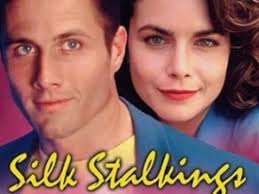
Silk Stalkings (Tubi)
I decided to binge all 8 seasons of the stylish 90s crime show, Silk Stalkings. This show also airs on one of the retro channels, ZLiving. It was a stylish show about rich people doing bad things, often while undressed. The first few seasons starred Rob Estes and Mitzi Kapture as Chris and Rita, two detectives who worked together to solve crimes and who generated endless amounts of sexual tension.
My sister Megan and I watched the pilot on Monday. Chris and Rita investigated the murder of a model. Not surprisingly, the pilot was mostly about introducing Chris and Rita and establishing that they were attractive people who would be worth watching. The pilot did a good job of just that. Estes and Kapture had obvious chemistry from the start. Even overly cutesy things — like calling each other “Sam” — were charming when they did it. A good deal of time was devoted to Rita recovering from an aneurism, with gave the audiences a chance to see just how much Chris cared about his partner. It was sweet, even if I have to agree with Rita that Chris was being a bit overprotective. After the pilot, Megan and I watched two more episodes. Chris and Rita investigate an old rich man who was shooting snuff films in his private sex dungeon and Rita came to terms with the tragic details of her father’s death. And then, a rich car salesman was found floating in the ocean. Fortunately, Chris and Rita were able to bring his very attractive killers to justice!
On Tuesday, we watched an episode in which Chris and Rita solved the murder of a wealthy (naturally) man who was killed on a golf course by an assailant who wielding a meat hook! AGCK! It was a grisly case but the important thing is that everyone involved was attractive. Rita got shot towards the end of the episode. She survived but Megan and I were still like, “Awwwwww!” when Chris got all worried about it. This was followed by a fun episode in which Chris and Rita investigated the murder of a Congressman. You might be surprised to learn that investigating the death of a politician involves talking to a lot of half-naked people. Chris and Rita (especially Chris) were up for the job! This episode also featured a cute little subplot where Chris tried to help Rita deal with her insomnia. Rita had a big poster that simply read, “ART!” in her bedroom.
The first episode that we watched on Wednesday featured Chris and Rita investigating the murder of a half-naked,rich woman. This led to a scene in which they arrested a naked man who, standing in his hot tub, announced that “I heard you would need a semen sample. I was just getting warmed up for you.” Meanwhile, Chris reconnected with an ex-girlfriend who was now working as a stripper. Reconnecting, in this case, meant spending a lot of time at the beach. It was a fun episode. The second episode found Chris and Rita investigating the murder of a sleazy tabloid publisher. Of course, if this show had been made today, he would have just owned a clickbait factory and his death would have been live-streamed. Chis was also upset that Rita had a date with a guy that she barely knew. The date, of course, led to wild limo sex because seriously, what else are you going to do in a limo?
We got things started on Thursday with an episode about a decadent socialite who was drowned in her own pool. Chris and Rita eventually discovered that the killer was a psycho named James who, ironically enough, also ended up dying in a pool. Of course, James killed himself by jumping into the water while holding a sander. We then watched an episode featuring Chris and Rita investigating a murder that had been committed by a bunch of frat boys. Megan and I both agreed that frat boys were the worst!
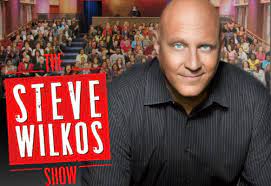
The Steve Wilkos Show (Weekday Morning, Channel 33)
Hey, Steve Wilkos! Giving lie detector tests and changing lives! Good for you, Steve! I watched your show on Wednesday morning because I was waking up and getting ready for my day and I was basically too busy to change the channel! Get the Hell off my stage!
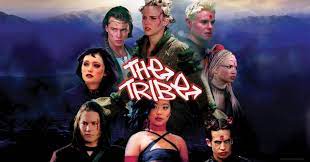
The Tribe (Pluto TV)
The Tribe is a British/New Zealand co-production that ran for five seasons in the last 90s and the early aughts. It takes place in a future in which all of the adults have been killed by a mysterious virus, leaving behind only children and teenagers who have all formed “tribes,” and who are having to grow up in a world ruled by fear and anarchy. A friend of mine has been recommending this show to me for a while. One of my New Year’s resolutions was to finally check it out!
And that’s what I did. On Saturday morning, around 2 a.m., I watched the first episode on Pluto. It was pretty good. It quickly set up the premise and introduced the characters. Actually, it did quite a bit in just 25 minutes. After meeting in an abandoned city, the main tribe took refuge in a mall. Meanwhile, on the outside, a group of teenagers drove around in a cop car, the siren wailing ominously. It was was an intriguing opening and, after watching the first episode, I decided that The Tribe would be one of the shows that I would binge over the course of 2022.
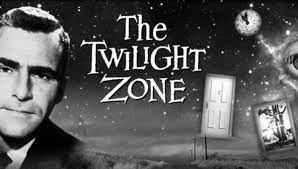
The Twilight Zone (Saturday and Sunday, SyFy)
I got a few episodes of SyFy’s annual Twilight Zone marathon. On Saturday, I saw Burgess Meredith break his glasses. I saw the one with the hitch-hiker who kept saying, “Going my way?” And I saw one of my absolute favorite episodes, The Monsters Are Due On Maple Street. On Sunday, the highlight included Twenty-Two (“Room for one more!”), Peter Falk playing Castro in The Mirror, The Hunt (in which a man realizes that only Hell would refuse to allow dogs), The Bard (in which Shakespeare met Burt Reynolds), and The Changing of the Guard with the great Donald Pleasence!
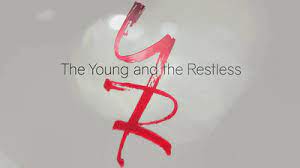
The Young and the Restless (Weekday mornings, CBS)
Because I had so much fun with Days of Our Lives on Tuesday, I decided to watch The Young and The Restless on Wednesday. Unfortunately, the episode of Y&R that I saw was a bit dry, with a lot of scenes of people standing around and talking about a lawsuit. It was kind of boring but at least everyone looked good!




























